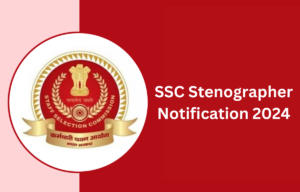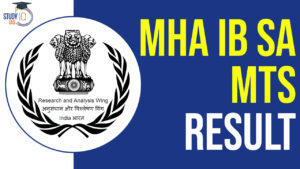Daily Current Affairs for UPSC 2023
Q) Recently seen in news, the ‘Global Terrorism Index’, 2023, was released by which one of the following organizations?
- World Economic Forum
- London School of Economics and Political Science
- Institute for Economics and Peace
- Office of the United Nations High Commissioner for Human Rights
Daily Current Affairs for UPSC – 21 March 2023
Explanation:
- Option (3) is correct: The tenth Global Terrorism Index (GTI) report 2023 was released by the Institute for Economics and Peace (IEP). Afghanistan remains the country most impacted by terrorism for the fourth consecutive year, despite a decline in death numbers. The decline was mainly due to exclusion of acts of state repression and violence by state actors, which is basically committed by the Taliban. India is ranked 13th on the index, marking a marginal decrease from the previous year. Despite being among the 25 worst-hit nations on the index, Indian respondents do not consider war and terrorism as the biggest threat to their daily safety. South Asia remains to be the region with the worst average GTI score. There was a decline of 30 per cent when compared to the previous year, mainly due to improvement in Afghanistan. Pakistan witnessed an increase in terror-related deaths, recording a 120 per cent increase from the previous year.
Q) Consider the following statements about waste-to-energy projects:
- Both non-recyclable dry and wet waste can be used to make energy.
- In the process of Gasification heat is applied to break down materials in the absence of oxygen.
- Biomethanation is anaerobic digestion of organic materials which is converted into biogas.
Which of the statements given above is/are not correct?
- 1 and 2 only
- 2 and 3 only
- 1 and 3 only
- 1, 2 and 3
Explanation:
- Statement 1 is incorrect: Waste-to-energy projects use non-recyclable dry waste to generate electricity. The energy plant works by burning waste at high temperatures and uses the heat to make steam. The steam then drives a turbine that creates electricity. Waste-to-energy projects can consume only non-recyclable dry waste, which is about 25% of the waste.
- Statement 2 is incorrect but statement 3 is correct: Incineration is complete combustion of Municipal Solid Waste with the recovery of heat to produce steam that in turn produces power through steam turbines. Gasification is a process that uses high temperatures in the presence of limited amounts of oxygen to decompose materials to produce synthetic gas (a mixture of carbon monoxide (CO) and hydrogen (H2)). This gas further can be used for thermal or power generation purposes. Pyrolysis uses heat to break down combustible materials in the absence of oxygen, producing a mixture of combustible gases (methane, hydrogen, and carbon monoxide), liquids and solid residues. The gas can be used in boilers to provide heat, or it can be cleaned up and used in combustion turbine generators. Biomethanation is anaerobic digestion of organic materials which is converted into biogas. Anaerobic digestion (AD) is a bacterial fermentation process that operates without free oxygen and results in a biogas containing mostly methane, carbondioxide and other gases.
Q) With reference to ‘sealed cover jurisprudence’, consider the following statements:
- It is the practice of passing a decree in sealed envelopes so as to protect confidential information.
- The Indian Evidence Act of 1872 defines the doctrine of sealed cover jurisprudence.
Which of the statements given above is/are correct?
- 1 only
- 2 only
- Both 1 and 2
- Neither 1 nor 2
Explanation:
- Statements 1 and 2 are incorrect: Sealed cover jurisprudence is the practice of seeking and accepting information from government agencies in sealed envelopes that can only be perused by judges. It has been followed by the Supreme Court in the past and sometimes in the lower courts as well. This can happen in broadly two kinds of cases when the information is connected to an ongoing investigation, when the information is personal or confidential in nature. It is understood that in the first situation, an ongoing investigation could be impeded by the disclosure, and in the second situation, an individual’s privacy could be affected or there may be a breach of trust. While a specific law does not define the doctrine of sealed cover, the Supreme Court derives its power to use it from Rule 7 of order XIII of the Supreme Court Rules and Section 123 of the Indian Evidence Act of 1872. Rule 7 of order XIII of the Supreme Court Rules provides that if the Chief Justice or court directs certain information to be kept under sealed cover or considers it of confidential nature, no party would be allowed access to the contents of such information, except if the Chief Justice himself orders that the opposite party be allowed to access it. It also mentions that information can be kept confidential if its publication is not considered to be in the interest of the public. Section 123 of the Indian
Q) Consider the following statements about ‘National Security Act (NSA), 1980’:
- Even if someone is in police custody, the District Magistrate can impose the NSA on them.
- Individuals charged under the NSA can be detained without a charge for a maximum period of two months.
- An individual detained under the NSA have the right to make representation before an independent advisory board.
Which of the statements given above is/are correct?
- 1 and 2 only
- 2 only
- 1 and 3 only
- 2 and 3 only
Explanation:
- Statement 1 is correct: National Security Act (NSA), 1980 was passed by the Parliament in 1980. The act empowers the state to detain a person without a formal charge and without trial. The act is invoked to take a person into custody, preventing them from acting in any manner prejudicial to “the security of the state” or for “maintenance of the public order”. The act is invoked through an administrative order passed either by the Divisional Commissioner or the District Magistrate (DM). The District Magistrate can slap NSA against an individual even if they are in police custody. No legal proceedings can be initiated against the official who carries out the orders under NSA.
- Statement 2 is incorrect: The National Security Act, 1980 has been invoked against separatist leader Amritpal Singh in Punjab. A person can be detained under the NSA even if the same person has been acquitted by the court. The NSA snatches away the individual’s constitutional right to be produced before the magistrate within 24 hours. The detained person loses the right to move a bail application before a criminal court. Individual charged under NSA can be detained without a charge for a maximum period of 12 months. The detainee can be held for 10 to 12 days in special circumstances without informing them about the charges against them.
- Statement 3 is correct: Individual can be detained to prevent them from acting in any manner prejudicial to the defence of India, relations of India with friendly countries or the security of India. The law can also be invoked to prevent a person from acting in any manner prejudicial to the maintenance of supply and services essential to the community. Persons detained under NSA have the right to make an effective representation before an independent advisory board, which consists of three members and is chaired by a member who is, or has been, a judge of a high court. The writ of habeas corpus is another remedy available under the Constitution against the state’s power of taking people into custody under the NSA.
Q) With reference to ‘hailstorm’, consider the following statements:
- The hailstorm forms when the water droplets freeze under the influence of an updraft in a thunderstorm.
- For hailstones to grow larger, the force of the updraft must be stronger than the pull of gravity.
- Hailstorms mostly affect the northeast and western Himalayas in India.
Which of the statements given above is/are correct?
- 1 and 2 only
- 2 and 3 only
- 3 only
- 1, 2 and 3
Explanation:
- All statements are correct: Hailstorm is a severe weather phenomenon that produces ice as precipitation. Hail is solid precipitation made of balls or irregular lumps of ice, each of which is called a hailstone. Unlike graupel or snow-ice pellets that are smaller and translucent, hailstones consist mostly of water ice and measure between 5 mm and 15 cm in diameter. Any thunderstorm, which produces hail that reaches the ground, is termed a hailstorm. A hailstone begins as a water droplet that is swept up by an updraft inside of a thundercloud. Inside the cloud, there are a large number of other supercooled water droplets already present. These supercooled particles will adhere to the water droplet’s surface, forming layers of ice around it. As the water droplet reaches higher elevations within the cloud it comes into contact with more and more supercooled particles. The hail embryo will grow larger and larger as it reaches higher altitudes in the updraft. The hailstone will reach a size and weight where gravity will begin to act on it and pull it down. Hail forms as super-cooled droplets, ice crystals and water freeze upon an embryo hailstone. Once hail forms, gravity will bring the hail to the earth’s surface. If the updraft is stronger than the pull of gravity, the hailstone will continue to grow. In India, hailstorms mostly affect the northeast and western Himalayas, with the maximum strikes in March and April.


 SSC Stenographer 2024 Notification Out a...
SSC Stenographer 2024 Notification Out a...
 IB SA MTS Final Result 2024 Out at mha.g...
IB SA MTS Final Result 2024 Out at mha.g...
 Model Skill Loan Scheme, Eligibility, Re...
Model Skill Loan Scheme, Eligibility, Re...

















